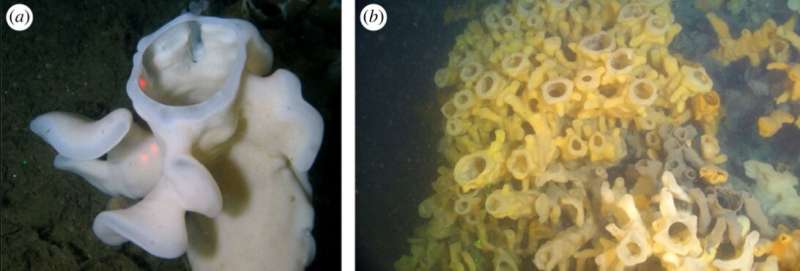This article has been reviewed according to Science X's editorial process and policies. Editors have highlighted the following attributes while ensuring the content's credibility:
fact-checked
peer-reviewed publication
trusted source
proofread
Glass sponge genome furnishes insights into evolution of biomineralization

Researchers led by geobiologist Professor Gert Wörheide have decoded the genome of Aphrocallistes vastus, a reef-building glass sponge found off the coast of British Columbia. The sponge possesses a unique skeletal structure of amorphous silicon dioxide, from which the class of glass sponges gets its technical name—Hexactinellida.
Well-annotated and contiguous genomes are an indispensable resource for understanding the evolution, development, and metabolic capacities of organisms. However, the ecologically important sponges are underrepresented with respect to available genome resources.
As the researchers report in the journal Royal Society Open Science, the sponge species possesses a compact genome with numerous nested genes. The study identified several genes connected with the growth of the animals, and in particular with the formation of their mineral skeleton.
Its results suggest that the biomineralization of silicon dioxide developed independently in different sponge classes. "Our investigations shed a new light on the biology of glass sponges, provide valuable insights into their evolutionary history, and highlight their ecological significance, deepening our understanding of these mysterious organisms and their important role in marine ecosystems," says Wörheide.
More information: Warren R. Francis et al, The genome of the reef-building glass sponge Aphrocallistes vastus provides insights into silica biomineralization, Royal Society Open Science (2023). DOI: 10.1098/rsos.230423
Journal information: Royal Society Open Science
Provided by Ludwig Maximilian University of Munich




















